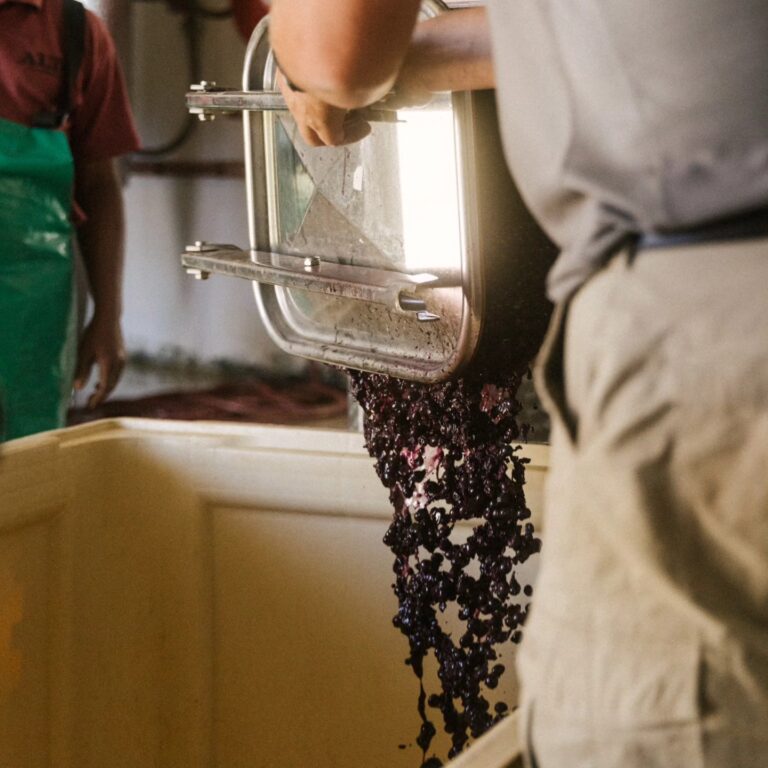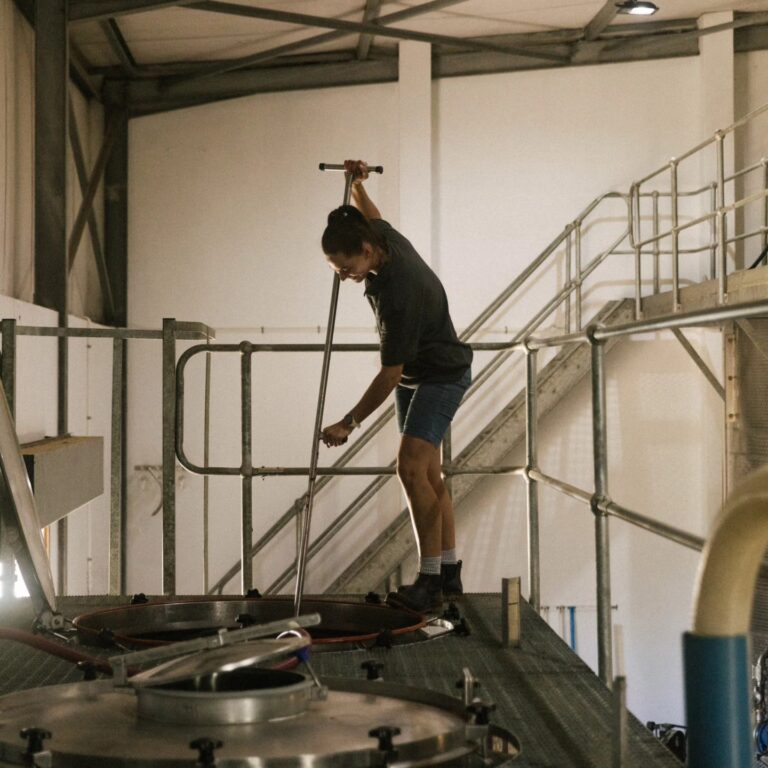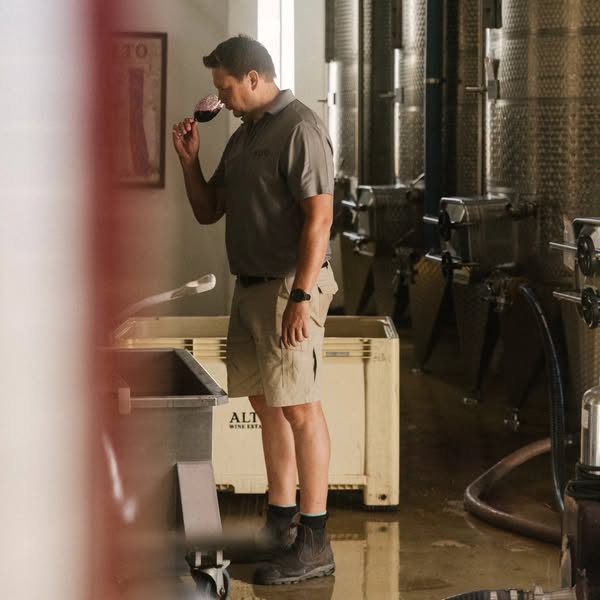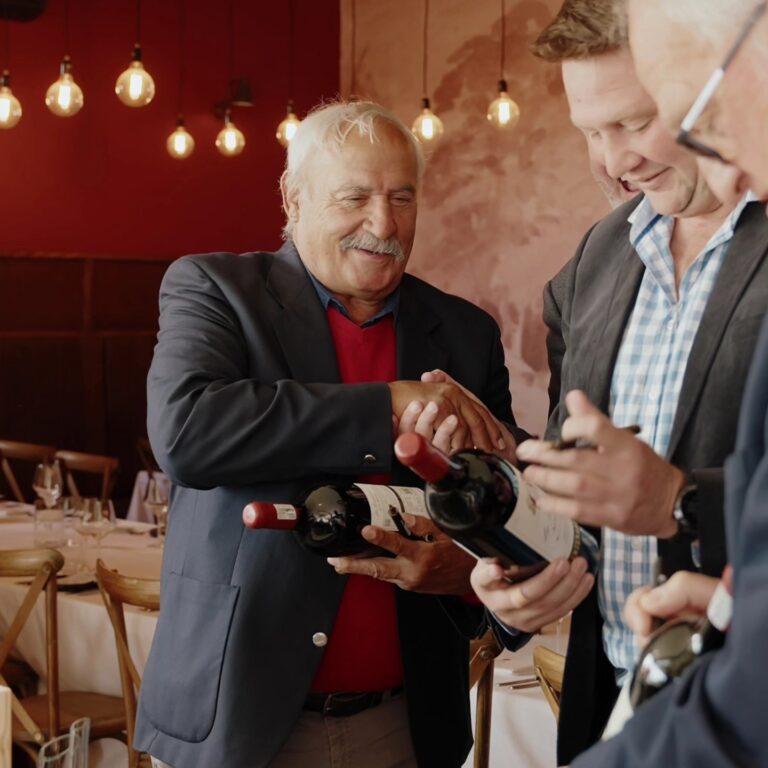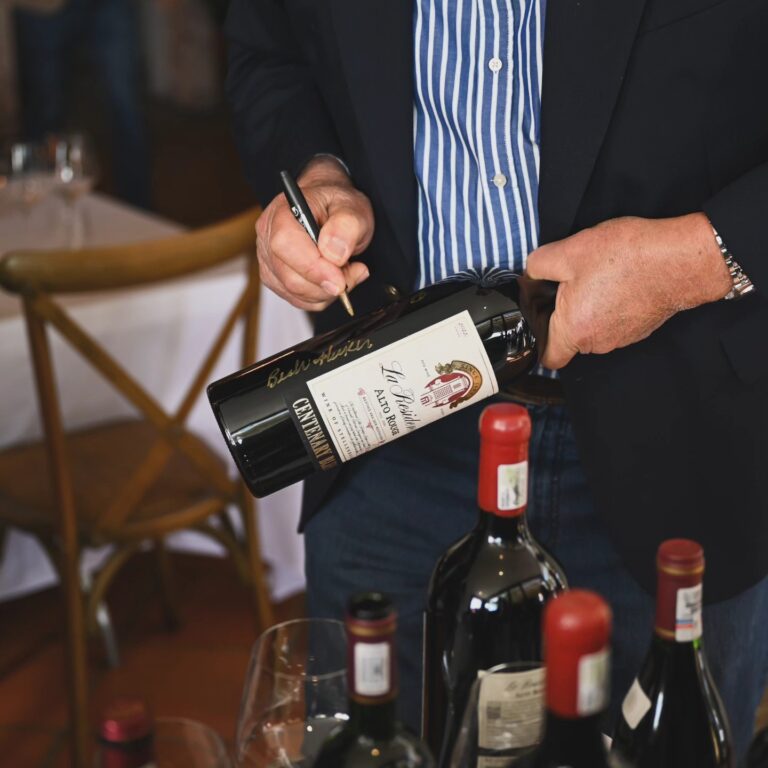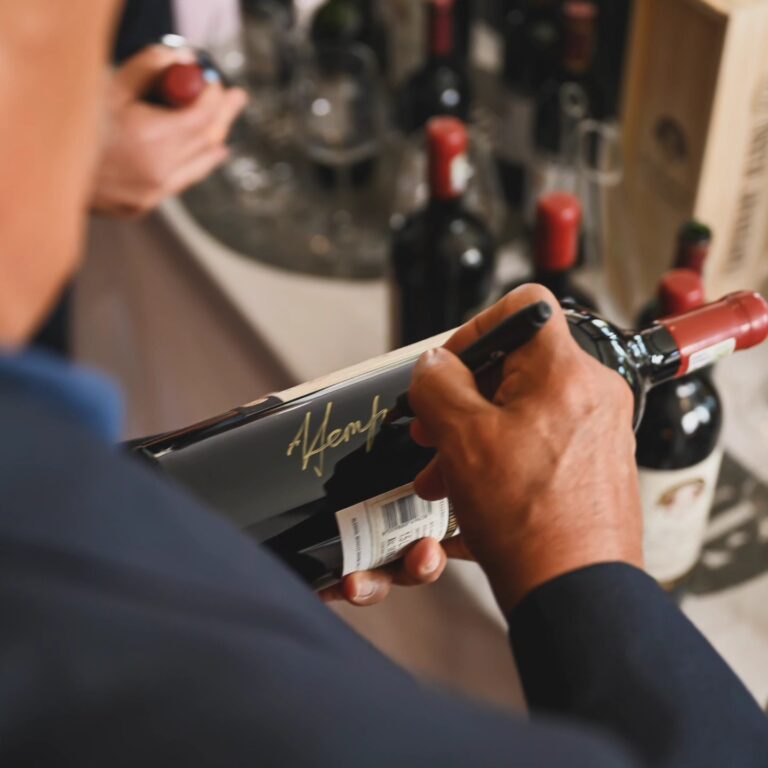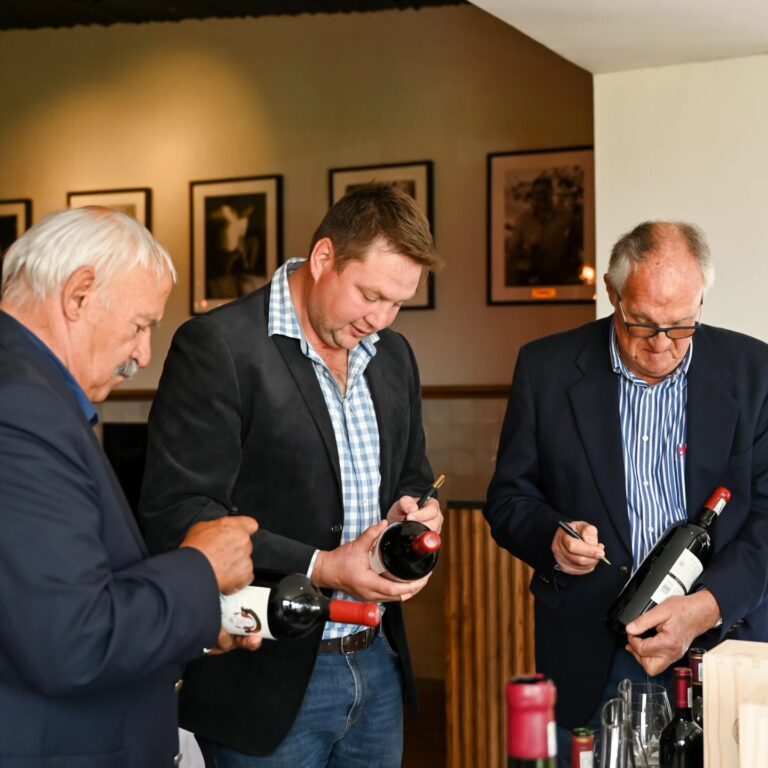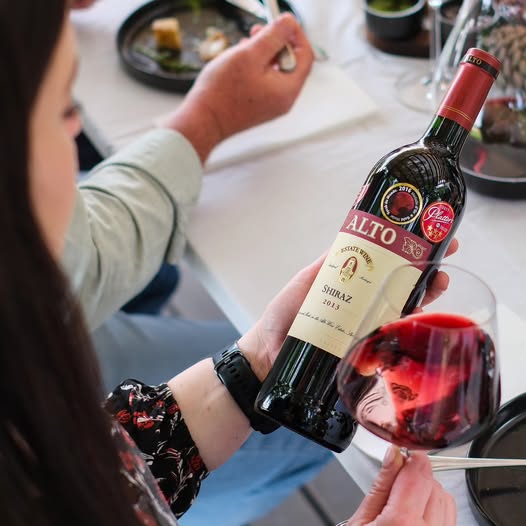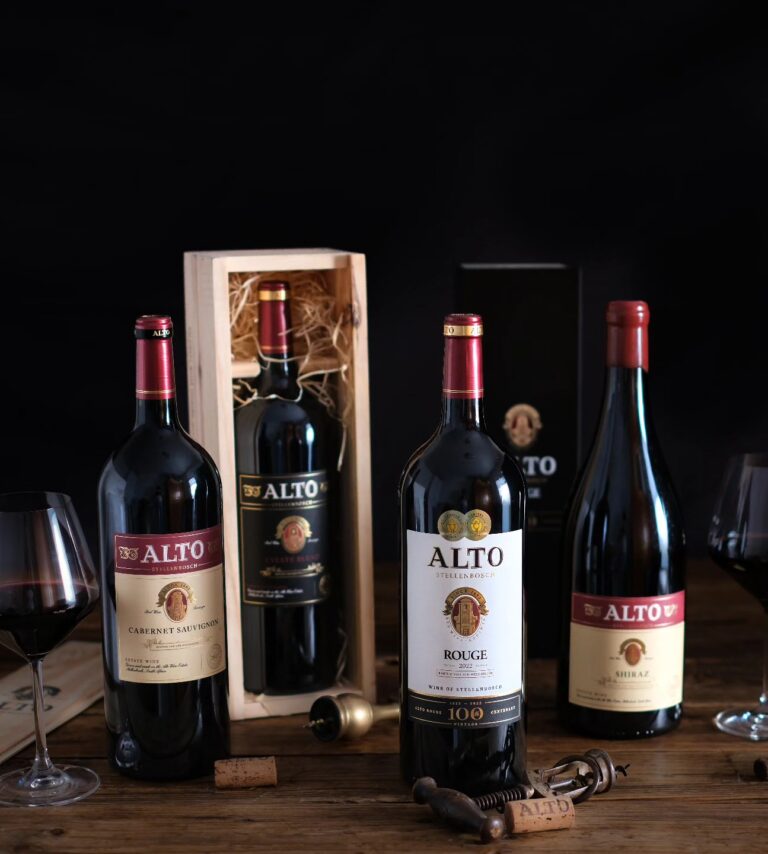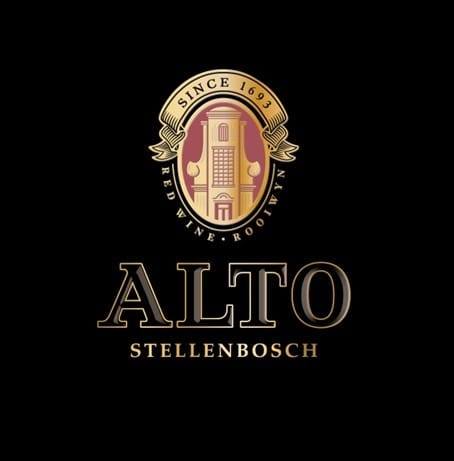Alto Wine Estate: Stellenbosch’s Red Wine Legacy in the Golden Triangle
Nestled high on the northern slopes of Stellenbosch’s Helderberg Mountain, Alto Wine Estate welcomed me with sweeping views of vine-clad hills, Table Mountain in the distance, and a glass of their iconic Alto Rouge that carried a century of red-wine mastery. Writing for CapeVineMaster.co.za, my visit to this historic winery, just 15 minutes from Stellenbosch’s heart, was a journey into South Africa’s oldest dedicated red-wine estate. Established in 1919 and rooted in a terroir dubbed the “Golden Triangle,” Alto blends heritage, innovation, and bold flavors under the stewardship of winemaker Bertho van der Westhuizen. From its storied past to its robust vintages and a tasting room offering breathtaking vistas, Alto is a must-visit—though a few refinements could elevate its allure. Join me as I uncork the estate’s story, its vines, its wines, and the experiences that make it a Stellenbosch treasure.
A Century of Red-Wine Pioneering
Alto’s roots trace back to 1693, when the farm, then called Groenrivier (Green River), was granted to a Dutch settler. It wasn’t until 1919 that owner Hennie Malan and his son Manie transformed the 90-hectare property into a dedicated wine farm, recognizing its granite slopes and warm northern exposure as ideal for red varietals. They named it “Alto,” from the Latin altus (high), reflecting both the estate’s altitude (100–500m above sea level) and their pursuit of excellence. By 1946, Alto became South Africa’s first private red-wine cellar, setting a benchmark for quality.
The Malans nurtured the estate until 1959, when Piet du Toit purchased it, followed by Hempies du Toit in 1983, whose son Schalk van der Westhuizen crafted acclaimed vintages. Today, Bertho van der Westhuizen, Schalk’s son and only the fifth winemaker in Alto’s history, continues the legacy under LVS Capital’s ownership. The estate’s commitment to sustainability—water recycling, soil conservation, and minimal intervention—has earned it acclaim, though I wished for a guided historical tour to spotlight the Malans’ vision and the cellar’s evolution.
Vineyards and Varieties: The Golden Triangle’s Terroir
Alto’s 90 hectares of vineyards, primarily Cabernet Sauvignon, thrive in Stellenbosch’s “Golden Triangle,” a terroir famed for robust reds. Perched on decomposed granite slopes, the vines face north, northeast, and northwest, basking in ample sunshine while cooled by Atlantic breezes, which extend the ripening period for concentrated flavors. The estate’s soils, rich in clay and iron, add structure and depth, ideal for full-bodied reds. Bertho’s meticulous approach—hand-harvesting, low yields (6–8 tons/ha), and trellised vines—ensures quality.
The key grape varieties include:
- Cabernet Sauvignon: The estate’s cornerstone, bold and age-worthy.
- Shiraz: Spicy and rich, a Stellenbosch classic.
- Merlot: Soft and plummy, key in blends.
- Cabernet Franc: Herbal and structured, for complexity.
- Rosé (Cabernet Sauvignon): A newer, vibrant addition.
These cultivars, rooted in soils dating back millions of years, produce wines with intense fruit, firm tannins, and longevity, as noted by international critics. The estate’s focus on reds, with a small rosé offering, underscores its niche as a red-wine specialist.
The Wines: A Tribute to Red-Wine Craft
Alto’s portfolio, crafted by Bertho van der Westhuizen, is a celebration of Stellenbosch’s red-wine heritage, with the Alto Rouge blend marking its 100th consecutive vintage in 2022. The wines, lauded by Mundus Vini and Veritas, range from single varietals to blends, each reflecting the Golden Triangle’s terroir. Here’s what I tasted:
- Alto Rosé 2024: A Cabernet Sauvignon-based rosé with strawberry and citrus notes. Crisp and summery, though it lacks the depth of reds.
- Alto Rouge 2023: A blend (Merlot, Cabernet Sauvignon, Cabernet Franc, Shiraz) with leafy dark berries and a savory finish. A gold-medal icon, but its complexity demands food pairing.
- Cabernet Sauvignon 2021: Dense ruby with blackcurrant, cedar, and firm tannins. A collector’s gem, though it needs 5–10 years to soften.
- Shiraz 2022: Spicy blackberry, leather, and pepper. Robust and balanced, my favorite for its immediacy, though some find it too bold.
- Estate Red Blend: Merlot-driven with dark fruit and spice. Elegant and approachable, but overshadowed by single varietals.
- MPHS (Merlot, Pinotage, Hermitage, Shiraz): A flagship with plum, spice, and chewy tannins. Complex but limited in availability.
- Cape Vintage 500m: A fortified red dessert wine with raisin and chocolate. Rich but niche, best in small sips.
Priced from R100 (Rosé) to R300 (MPHS), the wines offer value, with Wine Club discounts (15% off first orders) and free delivery for 12+ bottles. My critique? The rosé, while refreshing, feels like an afterthought, and the dessert wine is too specialized for casual drinkers. Some reds could benefit from subtler oak to let fruit shine. Stock shortages, especially for MPHS, and higher cellar-door prices compared to supermarkets, as one reviewer noted, are frustrations.
The Tasting Room: Views and Vibes
The tasting room, a cozy space with terracotta floors and reed ceilings, offers stunning views of Stellenbosch Hills and Table Mountain from its shaded deck and lawns. Open daily (10am–5pm, last tasting at 4pm), it’s intimate yet elegant, though renovations from November 2024 to mid-2027 will shift tastings to nearby Bonte Rivier Vineyards (Klein Alto). Tasting options include Alto Estate (R50, 4 wines), Signature (R65), MPHS (R75), Premium (R120, 7 wines), and pairings like biltong (R160) or smoked cheese (R150).
My biltong pairing, guided by the knowledgeable Howard, was a delight, with the Shiraz and spicy biltong a perfect match. The deck’s views, as Tripadvisor reviewers rave, are breathtaking, though the indoor space feels dated, with “uncomfortable squared chairs” and a “boxy” vibe, as one visitor noted. Crowding can disrupt the experience, and tastings aren’t waived with purchases, unlike many estates. The shop sells wines and platters (R160+), but international shipping is tricky, and some wines are cheaper elsewhere.
Activities to Savor at Alto
Alto is a red-wine lover’s haven with activities that highlight its heritage and scenery:
- Wine Tastings: Four tasting options, with biltong or cheese pairings, are the core draw. Bookings are essential for groups over six (info@altowines.co.za). The deck is ideal, but indoor seating lacks charm.
- Restaurant: Open Tuesday–Sunday (11am–5pm), it serves hearty fare like pork belly, Alto burgers, and seared trout, paired with wines. My burger was “cooked to perfection,” but the menu is limited, and bread quality disappointed some.
- Sundowners: Friday evenings (5pm–9pm, summer) feature live music, platters, and wines on the lawn. The vibe is relaxed, but performers deserve more audience attention, as one reviewer noted.
- Barrel Cellar Stroll: Self-guided access to the working cellar offers a peek into winemaking. A guided tour would add depth, as the cellar’s history is understated.
- Events: Alto hosts weddings and private functions, with the scenic backdrop a draw. Contact the estate for bookings.
- Scenic Relaxation: The lawns and deck invite lingering, with views to Table Mountain. More shaded seating would improve comfort on hot days.
The estate’s lack of kids’ facilities makes it best for adults, though its proximity to Stellenbosch suits families staying nearby. Posts on X highlight the exclusive Cabernet Sauvignon Rosé, available only at the tasting room, adding allure.
A Positive Yet Critical Review
Alto Wine Estate is a Stellenbosch icon, delivering robust reds that embody the Golden Triangle’s terroir. The Cabernet Sauvignon and Shiraz are world-class, and the Alto Rouge’s 100th vintage is a testament to consistency. The tasting room’s views, paired with Howard’s stellar service, create a memorable experience, while the restaurant’s hearty fare complements the wines. The estate’s heritage, with only five winemakers in a century, and its sustainable practices add depth to its appeal.
However, there’s room for improvement. The tasting room’s dated interior and crowding detract from the wine’s quality, and renovations can’t come soon enough. Tastings should be waived with purchases, as is standard elsewhere, and cellar-door prices need alignment with retail. The rosé and dessert wine feel niche, and oak could be subtler in some reds. A guided cellar or historical tour would elevate the experience, as would better food pairings beyond biltong. Addressing shipping issues and stock availability would please buyers.
Final Thoughts
My day at Alto was a love letter to Stellenbosch’s red-wine legacy, leaving me with a bottle of Shiraz, a belly full of burger, and memories of Table Mountain’s silhouette. The estate’s blend of history, terroir, and bold wines makes it a pilgrimage for red-wine lovers, just 45 minutes from Cape Town. Book your tasting, snag a deck seat, and raise a glass to a century of excellence. Alto isn’t just a winery—it’s the heart of South Africa’s red-wine soul.
Plan your visit at Alto.co.za and join CapeVineMaster.co.za’s monthly tastings for more wine adventures!

